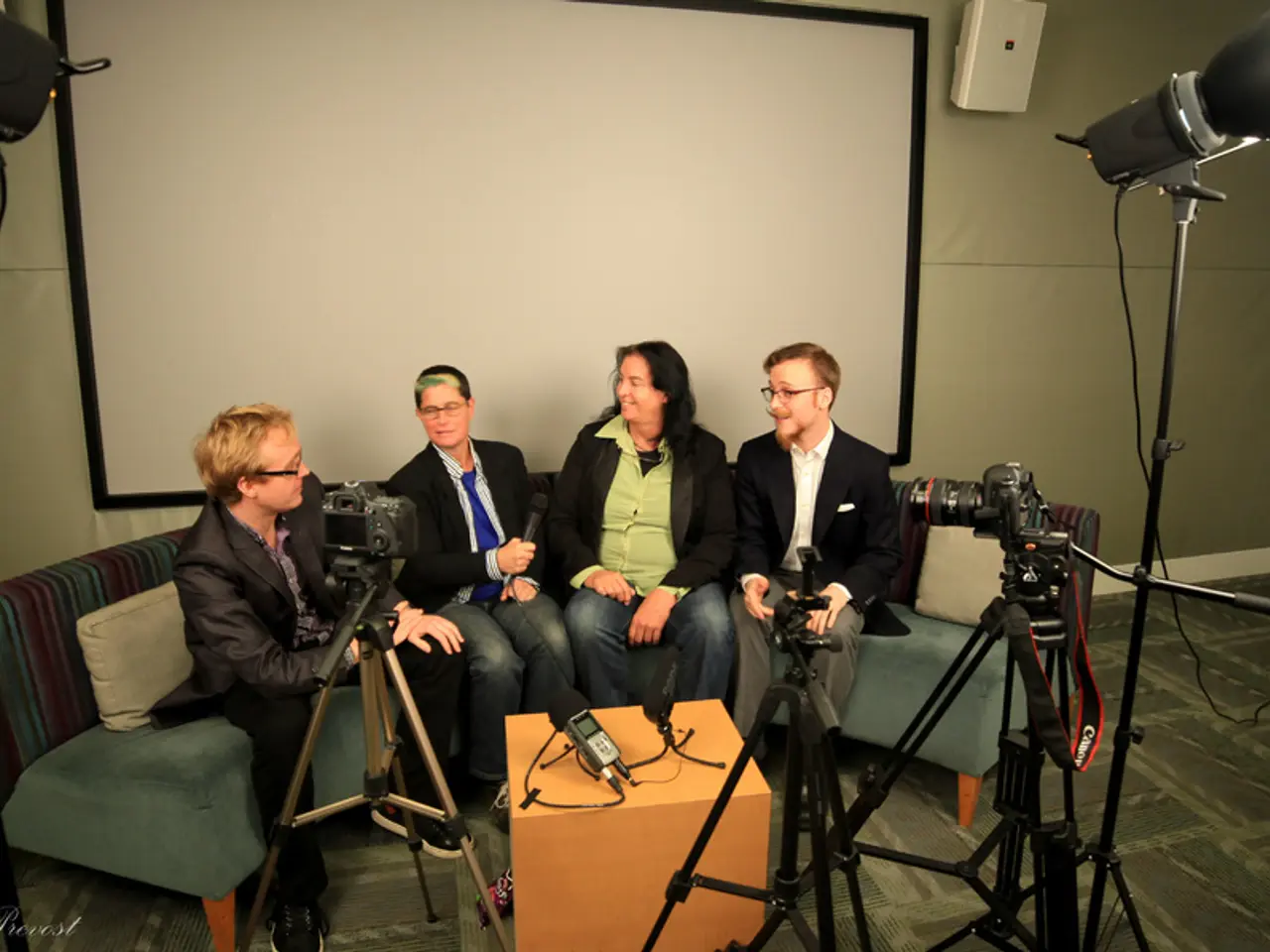The Impact of Personal Narratives in Behavioral Job Interviews
Mastering Behavioral Interviews: A Guide to Effective Storytelling
Behavioral interviews have become a common method in today's job market, offering a unique opportunity for candidates to showcase their skills and experiences. At the heart of this approach is the art of storytelling, a technique that can help job seekers engage interviewers, foster genuine connections, and demonstrate their value.
The Power of Storytelling
Storytelling in behavioral interviews is about weaving a narrative that brings one's professional journey to life. Sharing one's unique journey with confidence is key, as it helps establish an emotional connection and makes the story relatable and memorable. Embracing this approach has reshaped everyday professional communication, making it more engaging and effective.
The STAR Method
The behavioral interview format frequently employs the STAR method: Situation, Task, Action, and Result. This structured approach helps candidates deliver clear, concise, and complete answers that highlight their problem-solving skills and achievements.
To craft effective narratives using STAR, consider these tips:
- Allocate your response time wisely: Spend about 20% on the Situation, 10% on the Task, 60% on the Action you took, and 10% on the Result to emphasize your contributions and impact.
- Be specific and concise: Keep answers to about 1–2 minutes to maintain clarity and focus.
- Quantify results: Use numbers like percentages, dollar amounts, or timelines to demonstrate measurable impact.
- Focus on your role: Even when describing team efforts, highlight your individual actions and contributions.
- Tailor your stories: Customize examples to fit the job description and company culture for relevance and resonance.
- Practice aloud: Rehearse your answers to avoid filler words, rambling, and to refine phrasing.
- Build a STAR story library: Prepare multiple stories from different experiences (work, school, personal) showing leadership, teamwork, or problem-solving to be ready for various questions.
By following these guidelines, the STAR method can greatly improve your ability to communicate your competencies confidently and effectively during behavioral interviews.
Preparation is Key
Preparation is essential for successful storytelling in behavioral interviews. A simple exercise to prepare is to jot down key experiences along with the lessons learned from each one. This will help you tailor your stories to align with job-specific competencies and interview questions.
Think on Your Feet
Interviewers appreciate candidates who can think on their feet and relate experiences to the role they're vying for. Adaptability in storytelling is crucial to ensure the best fit for the position being pursued.
The Benefits of Behavioral Interviews
Beyond the interview, the behavioral interviewing process can offer a clearer understanding of oneself, serving as a personal growth exercise. Sharing personal feelings during interviews can make one's story relatable and memorable, and even admitting to mistakes can humanize one's narrative and demonstrate resilience. The ability to narrate one's story authentically and effectively is an invaluable asset in career development.
By mastering the art of storytelling in behavioral interviews, job seekers can make a lasting impression, increase their chances of securing their dream job, and grow both personally and professionally.
- Embracing storytelling in media, such as interviews, can help job seekers make their professional journeys relatable and memorable, fostering genuine connections and demonstrating their value.
- To prepare for behavioral interviews that primarily employ the STAR method, job seekers should jot down key experiences, their actions, the results, and lessons learned, tailoring their stories to align with the job-specific competencies and interview questions.
- Job seekers can enhance their personal growth and self-development by undergoing the behavioral interviewing process, as it provides a clearer understanding of oneself and the opportunity to share personal feelings, humanizing their narrative and demonstrating resilience.
- Engaging in education-and-self-development activities like learning about fashion, beauty, photography, or personal-growth subjects can enrich the stories shared in behavioral interviews, making candidates more versatile and adaptable, and ultimately improving their chances in competitive job markets.




